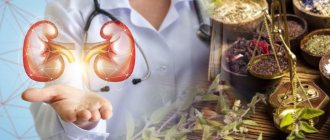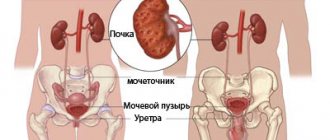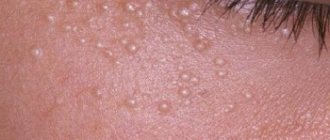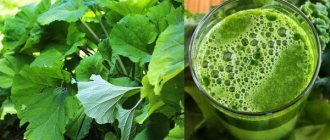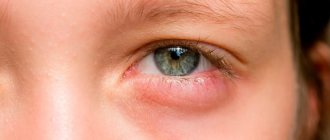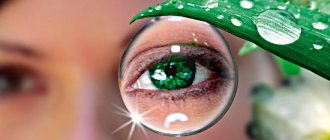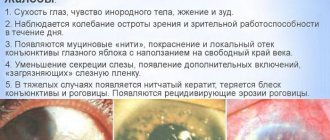Symptoms of kidney stones in women and men, treatment and prevention measures
Kidney stones are a type of urolithiasis diagnosed in approximately three percent of the world's population. Men, according to statistics, are more susceptible to the disease, but it is in women that the complex form of urolithiasis (coral stones) is most common.
How to understand that a woman has stones in her kidneys, what are the symptoms (except for the pain that accompanies the passage) and signs that the stone is passing out of the kidney? What should and should not be done for urolithiasis? Let's try to figure it out in the article.
Causes
Salts in a healthy body should be completely excreted in the urine. If one or another failure occurs - for example, associated with metabolic disorders - its crystals begin to stick together, taking on bizarre shapes and sizes. Large ones are considered to be 5mm or more.
As a rule, one does not think about the existing disease, its causes and the need for treatment as long as the crystal remains in a stationary position. When it starts to move, acute pain appears.
The most likely causes of the appearance of renal formations include:
- geographical factor - hot climate, insufficient water consumption or too hard water;
- various pathologies of the genitourinary system, congenital anomalies that cause narrowing of the urinary tract, which makes the outflow of urine difficult;
- vitamin imbalance, lack of ultraviolet radiation, unhealthy diet.
- abnormalities in the functioning of the parathyroid glands, causing disturbances in calcium metabolism;
- various diseases - pyelonephritis, hydronephrosis, kidney prolapse, inflammation of the bladder, prostate adenoma, prostatitis;
- sedentary work.
Often, kidney stones have a different nature, but in more than half of the cases their composition is mixed. They often end up in the bladder or ureter. Much is determined by the nature of nutrition and the age factor.
Types of kidney stones
You can determine how to crush kidney stones and successfully remove them when you have an understanding of what types of crystals you have encountered.
Kidney stones can be of the following types:
- Calcium phosphates are gray and much softer, they arise due to metabolic disorders and a shift to the alkaline side; an indicator can be the appearance of loose flakes in the urine.
- Calcium oxalate - dark or black in color, have spikes on the surface and therefore cause severe pain when moving, are usually eliminated with the help of surgery, arise from excess oxalic acid (you should not get carried away with consuming large quantities of beets, juices, carrots, vitamin C ).
- Protein - usually appear due to hereditary abnormalities, can be cured with medications, folk remedies and surgery (depending on the severity of the disease).
- Struvite - arise due to the appearance of bacteria in the body, most often they can form in women; with large formations, folk remedies and medications may not help and ultrasonic crushing or surgical intervention will be required.
- Urate - can only be detected using a urine test, often occurs due to dehydration; the diet for kidney stones in this case should include a large amount of water (you can add lingonberry or cranberry juice).
During pregnancy, treatment should be carried out very carefully and only after consultation with a doctor. Traditional methods can be used under someone’s supervision only in a situation where a specialist has approved their use.
Description of the disease
Urolithiasis is a metabolic disease characterized by the formation of insoluble salts, which leads to the formation of stones in the kidneys, bladder, and ureters.
It can become chronic and recur. The number of stones and their location varies depending on the severity of the disease.
The development of urolithiasis most often results from poor diet, consumption of poor water, climate, taking medications, defects in the development of the urinary system, hyperparathyroidism, deficiency of vitamins A and D, the presence of inflammatory diseases such as pyelonephritis and cystitis, and heredity.
The main symptoms of urolithiasis include:
- Acute attacks of pain in the back or side under the ribs. The interval between attacks varies from 20 to 60 minutes. Over time, as the stone moves, the pain spreads to the abdomen, perineum and inner thigh.
- Frequent urge to urinate, presence of traces of blood in the urine.
- General weakness of the body. In the presence of pyelonephritis, nausea and vomiting are observed.
- Chills and high temperature, indicating the removal of the formation.
If you have the above symptoms, you should consult a urologist. He will order additional examinations and make a final diagnosis.
Symptoms and photos
By itself, the presence of uroliths in the urinary system does not manifest itself in any way. Signs of kidney stones in women and men occur when the stones begin to interfere with the flow of urine. In this case, pain appears - the main symptom of the disease (see photo).
Pain when urolith is localized in the kidney is of two types:
- An acute attack of intense pain - renal colic. Occurs when the ureter is suddenly blocked by a stone. Localized in the right or left side (on the side of the lesion of the left or right kidney), it may be accompanied by symptoms such as nausea and vomiting.
- With incomplete obstruction of the urinary tract, the pain is not very strong, although it is constant, aching, or cramping.
The movement of stones through the urinary tract causes injury to their walls, which can result in blood appearing in the urine. The intensity of bleeding varies. From single red blood cells, detected exclusively under a microscope, to a significant admixture of blood, visible to the naked eye (macrohematuria).
Do not forget that a violation of the passage of urine can cause an infectious process in the kidney. By the way, the presence of stones almost always leads to chronic bacterial inflammation, in this case general infectious symptoms are added to the pain syndrome:
- increase in body temperature
- chills
- weakness
- headache, etc.
The clinical presentation of ICD does not depend on gender, so the symptoms of kidney stones do not differ in men and women.
Diagnosis of kidney stones
Recognition of kidney stones is made on the basis of anamnesis, a typical picture of renal colic, laboratory and instrumental imaging studies.
The leading method for detecting kidney stones is x-ray diagnostics. Most of the stones are identified already during survey urography. However, protein and uric acid (urate) kidney stones do not block rays and do not produce shadows on urograms. They can be identified using excretory urography and pyelography. In addition, excretory urography provides information about morpho-functional changes in the kidneys and urinary tract, the localization of stones (pelvis, calyx, ureter), shape and size of kidney stones. If necessary, urological examination is supplemented with radioisotope nephroscintigraphy, MRI or CT scan of the kidneys.
At the height of renal colic, sharp pain on the side of the affected kidney, a positive Pasternatsky sign, and painful palpation of the corresponding kidney and ureter are determined. Urine examination after an attack reveals the presence of fresh red blood cells, leukocytes, protein, salts, and bacteria. Biochemical examination of urine and blood to a certain extent allows us to judge the composition and causes of the formation of kidney stones.
Right-sided renal colic must be differentiated from appendicitis and acute cholecystitis, and therefore an abdominal ultrasound may be required. Using kidney ultrasound, anatomical changes in the organ, the presence, location and movement of stones are assessed.
Complications
Possible consequences if you have kidney stones:
| Hydronephrosis | long-term partial obstruction of the ureter with a stone leads to chronic overstretching of the renal pelvis, which in turn causes atrophy of the kidney tissue. As a result, the kidney actually dies, turning into a bag of urine (see kidney hydronephrosis). |
| Urinary tract infections | acute and chronic pyelonephritis, suppuration of the retroperitoneal space (fatty tissue in which the kidneys are located), urosepsis, etc. |
| Chronic renal failure | An increase in urine pressure in the urinary tract caused by stones, in combination with chronic infection, causes destruction of the filtering apparatus of the kidneys and sclerosis of its tissues. As a result, the kidneys cease to cope with their functions, up to the complete cessation of urine formation. |
How to remove kidney stones at home
Doctors are shocked! Removing kidney stones without surgery became possible thanks to A. Kirillovsky’s course!
A practical guide for those who care about their own health and do not want to overpay doctors for expensive operations
Do you want to get rid of kidney stones quickly, easily and painlessly?
- No more expensive pills and potions!
- No dangerous and expensive surgery!
- No more searching for medicinal herbs and potions!
- No to all kinds of electronic devices and devices!
Dear fellow sufferers. In 2010, while I was in the hospital preparing for surgery to remove a stone from my left kidney, I heard a heartbreaking story from a woman in Kazakhstan.
Margarita, that’s her name, fell ill with urolithiasis 15 years ago and then had a stone removed from her kidney for the first time. A year later, her stone grew again, and she again had to undergo surgery. I began to constantly take pills for stones, collect folk recipes, and drink herbs. However, all the measures helped the woman little, and she had to visit the operating room again and again.
Now she is disabled, left with one kidney, which is failing and cannot cope with its functions. Because of her kidneys, she suffered from many concomitant diseases, including renal failure, gout, chronic pyelonephritis, angina pectoris, liver failure and many others.
The sick woman's husband left her, her eyes were dull... At that time in the hospital she was lying with three stones in one remaining kidney. The doctors did not know what to do, because there was no living space left on the kidney after all the operations and crushing.
You are deeply mistaken! Do you think this story won't affect you? Kidney stones are found in approximately 500 people out of 100 thousand. A huge number of people walk around without even suspecting that they have huge stones growing and only accidentally discover them during an ultrasound of the kidneys.
Kidney stones, once formed, will grow again and again, this is a medical practice. If urolithiasis is not treated, the consequences can be dire, including death.
Do you want such a stone to ruin your life?
Kidney stones lead to disease!
The stones will invariably grow and will have to be removed surgically, and advanced urolithiasis leads to diseases such as:
- chronic pyelonephritis
- chronic cystitis
- chronic renal failure
- urethritis
- pyonephrosis
- hydronephrosis
- kidney removal
- and many associated diseases
And if you have surgery, do you think you will get rid of your problems? Whatever the case, the problems will only increase. Not only will the stones grow again, but surgery is never without consequences and complications.
Are you an enemy to your health? Do you want eternal pain for yourself instead of enjoying life?
If you are familiar with this...
- Pain and suffering even from a single stone stuck in the kidney. This stone can be very small - 4-5 millimeters. However, it brings such torment that it would be enough to climb the wall. Inexpressible suffering from the fact that this pebble blocked the ureter - the path to the exit of urine. It is sharp, scratches the mucous membrane of your ureter, but you have no time for that, you are rolling on the floor from terrible pain. The pain is such that you envy any pregnant woman, because the pain during childbirth is nothing compared to what you experience
- Somehow you ended up with an ultrasound where you were diagnosed with kidney stones, and you don’t know what to do about it now.
- You went for an ultrasound of your kidneys, the doctor said that you have a stone that can only be removed through surgery. You are shocked because until this time nothing bothered you, and now nothing hurts. You don't want any operations, but what to do with this stone, with this foreign body?
- The urologist tells you that you need to pay him 10, 20, 30... 100 thousand rubles for the operation, otherwise he will not do anything
- You are confused. How is it possible, we have insurance medicine, all ordinary operations should be done free of charge! But the doctor is inexorable, and you feverishly go through all the options in your mind on where to get money for the doctor’s operation. You do not want to bribe doctors for performing their direct duties
- You have already undergone some kind of surgery to remove kidney stones (open surgery, lithotripsy, etc.), but you do not want to cripple yourself with surgery anymore
Nobody wants to get on the cold surface of the operating table...
Now imagine...
- Kidney stones are gone forever! Without the slightest pain! In just a few hours!
- You can undergo an ultrasound of your kidneys, go to see a doctor and look into his shocked eyes
- You will spend money not on an expensive operation, but on the purchase, for example, of a fur coat, a plasma TV, a new kitchen set, a set of premium winter tires, a plot of land within the city, or even a used car...
- You will save yourself from postoperative complications, ranging from constant aching pain in the kidneys to medical errors, such as my neighbor, who was infected with Hepatitis C during surgery
- You will maintain your health because you will have a secret tool that official medicine has never even heard of! You can have it!
I have a ready-made solution. And not one, but three! I have prepared for you three most valuable recipes for removing kidney stones. And I'm ready to give them to you!
By following my step-by-step instructions, you will get rid of kidney stones easily, painlessly, using the most affordable means.
How to treat kidney stones?
In women and men, treatment of urolithiasis involves the use of 2 methods that are opposite in their mechanism of action:
- conservative therapy;
- surgical intervention.
As a rule, conservative treatment is used only when the stones are small in size. Medications are used to help dissolve stones and remove them from the body.
Today, stone-breaking tablets are used to treat kidney stones; here is a list of the most popular drugs:
- A lot of patients are satisfied with Madder Extract. It acts on phosphate stones. After consuming it, redness of the urine is noted; you should not be afraid of the blood, it is just a natural dye that manifests itself that way.
- Oxalates and urates are combated with Asparkam. In general, its main purpose is heartfelt, so you shouldn’t be arbitrary with it.
- A place of honor for the treatment of urolithiasis is given to Cyston. The tablets do not in any way affect the acid-base balance of urine, hence their versatility.
All drugs presented have diuretic, antimicrobial and antispasmodic effects. Freely sold in pharmacy chains. Despite this, medications can only be used after consultation with a doctor and certain diagnostic procedures.
The operation is performed in cases where drug therapy has failed. Several decades ago, surgical treatment involved an open operation, during which not only the stone, but also the affected organ was removed. Such an intervention was very traumatic and threatened with serious complications.
Removing kidney stones with medication
Nephrolithiasis is treated with medications that dissolve salt deposits in the kidneys:
- Uralit-U - shifts the pH of urine towards alkalis, thereby increasing the breakdown of cystine and uric acid salts,
- Avisan – relaxes the muscles of the urinary ducts, which facilitates the removal of stones and sand from the kidneys,
- Blemaren – maintains the acid-base balance of urine in the range of 6.7-6.8, due to which the dissolution of stones is accelerated,
- Magurlit – stimulates alkaline reactions in the kidneys, inhibits salt deposition,
- Soluran – suppresses the acid reaction in the kidneys, stimulating the breakdown of urate stones.
Medicines that dissolve stones are not used for low-grade kidney inflammation and circulatory failure.
Traditional recipes will help remove kidney stones
Each recipe using natural preparations is designed for specific stone formations. Without diagnosis, it is better not to self-medicate.
- Red rowan. Syrup from ripened rowan fruits is a proven diuretic and mild laxative for rheumatism, bladder and kidney stones, providing the body with the maximum amount of biologically valuable substances. Pass the washed fruits through a juicer (2 kg), then boil over low heat for about 10-17 minutes with 1.2 kg of granulated sugar. The consistency of the medicine should resemble syrup. Take 15 ml four times a day.
- Juice therapy. 2-3 times a day drink half a glass of hot water with the addition of the juice of one medium lemon. At the same time as this drink, drink half a glass of a mixture of freshly squeezed carrot, cucumber and beet juices, taken in equal proportions. The course of treatment should be carried out under the supervision of a doctor. The duration of therapy depends on the size and location of the stones.
- Watermelon rinds. Only raw materials from watermelons grown in your own garden are suitable for therapy, since the cultivation of fruits for sale uses a large amount of nitrates, which mostly accumulate in the skin of the berries. Dried in an oven or electric dryer, watermelon rinds pre-cut into pieces are poured with water (1:1), boiled over low heat for about half an hour, filtered and taken a glass 3 to 5 times a day before meals.
Before using traditional methods of treatment, you should familiarize yourself with the contraindications. Do not self-medicate by reading other people’s reviews on the Internet, since with kidney stones there can be many nuances that only a doctor can figure out.
What diseases does Furacilin treat?
More often, an antimicrobial drug is prescribed when the throat hurts due to seasonal colds. It is recommended when a person is infected:
- staphylococcal sore throat;
- acute or chronic form of tonsillitis;
- glossitis (local inflammation of the tongue);
- stomatitis (damage to the mucous membrane in the mouth);
- gingivitis (infection of the gums).
Furacilin is also prescribed for purulent otitis, conjunctivitis, bedsores, bacterial and fungal infections of the nasal cavity and other infectious diseases.
For sore throat
In acute tonsillitis, the tonsils become inflamed. The disease is accompanied by:
- high temperature;
- sore throat;
- redness of the mucous membrane;
- swelling of the tonsils;
- accumulation of plaque on the tonsils.
In severe cases, infusion therapy is used and immunoglobulins are administered. In acute tonsillitis, purulent plaque always forms in the oral cavity. It is removed mechanically. Rinsing with furatsilin solution relieves pain. The procedure helps to destroy microbes, and the healing process is shortened.
For pharyngitis
Inflammation of the lymph and tonsils is accompanied by a sore throat. Treatment with furatsilin up to three times a day is prescribed to relieve inflammation and acute symptoms along with other antiseptics.
Nutrition rules
Diet for kidney stones is the main treatment method for patients with urolithiasis, including after surgery. First of all, you need to pay attention to your drinking regime. The amount of liquid consumed daily by the patient should not be less than 2 liters (8 to 10 glasses). Be sure to drink a glass of water before bed.
The diet should be selected in accordance with the composition of the stones:
| Oxalant | limit the consumption of spinach, potatoes, sorrel, lettuce, milk and oranges; |
| Calcium | reduce the consumption of calcium-containing products: milk, cheese, yogurt, etc.; |
| Phosphate | completely eliminate dairy products, limit the consumption of fruits and vegetables by increasing meat and fish dishes and vegetable oils; |
| Urate | reduce to a minimum the consumption of meat and fish, meat broths, vegetable fats, and offal. |
Paying close attention to your health will help you detect signs of kidney stones in time, recognize urolithiasis and take measures to remove stones from the body.
How are kidney stones crushed?
Today, the main direction of treatment for nephrolithiasis is the crushing and removal of kidney stones. This applies to stones whose dimensions exceed 5 mm.
- Laser crushing is the most modern and safest method used in the presence of kidney stones of various sizes. The procedure uses a nephroscope inserted through the urethra. Through it, a laser fiber is fed to the kidney, turning stones into fragments, the size of which does not exceed 0.2 mm. Then the sand is freely excreted along with the urine. It should be noted that this is a minimally invasive, absolutely painless procedure that can be used even when removing coral stones.
- External lithotripsy. Remote impact on a calculus using the shock wave method involves the use of a special apparatus (lithotripter). Depending on the modification of the device, a powerful ultrasonic or electromagnetic wave easily and painlessly overcomes soft tissue and has a crushing effect on a solid foreign body. First, the stone is broken into smaller fractions, after which it is easily removed from the body.
- Percutaneous contact nephrolitholapaxy. This technique, which involves crushing and removing a kidney stone using a nephroscope, is used if the size of the formation exceeds 1.5 cm. When performing an operation in the lumbar region, a puncture is performed (an incision not exceeding 1 cm in diameter), leading to the lower kidney segment. Through it, a nephroscope and miniature surgical instruments are inserted, which are used to crush and extract stones.
- Transurethral urethrorenoscopy. In urological practice, this technique is used to remove small stones localized in the kidney, ureter, bladder or urethra. The procedure is performed on an outpatient basis, i.e. does not require hospitalization. The stone is crushed or removed using a urethroscope inserted into the ureter or a nephroscope inserted directly into the kidney. It should be noted that this is a rather traumatic technique that requires high professionalism and extensive experience from the urologist.
It is worth remembering that these techniques do not eliminate the cause that provoked the formation of stones, and therefore, after their removal, stone formation may occur again.
Crushing kidney stones
Fact!
There are many official ways to remove kidney stones in the world, but traditional medicine cannot rid you of an ill-fated stone without the help of surgery!
You can get as many as three unique ways to remove stones, which I tested personally on myself.
My history
My name is Alexander Kirillovsky. I became involved with kidney problems and urolithiasis after I underwent surgery to remove a stone from my left kidney in 2010. I remember these sensations when there was a constant ache in the lumbar region. I didn’t want to go to the doctor; I didn’t have time.
I couldn’t sleep at night, couldn’t stand, sit, or lie down. Only painkillers helped, but I understood that they only gave a temporary effect. When I finally got ready and visited the urologist’s office, had an ultrasound, it turned out that there was a 1.6 cm stone in my left kidney - the culprit of my pain and troubles. With the test results, I went to the doctor’s office, who told me that removing the stone was only possible through surgery.
I really wanted him to tell me: “It doesn’t matter, the stone can just be dissolved!” However, I did not expect such words from the urologist. I really wanted the doctor to tell me - “You can do without any operations, the stone can be broken into small pieces, which will then be released in the urine.” However, I did not hear these words from the doctor. I heard only one thing: “In our hospital they only do open operations. We have a young surgeon who just graduated from medical school. If you wish, he will try to perform such an operation on you... for 10,000 rubles.”
Shock – in other words, my state cannot be expressed. I have to kick the young doctor for practicing on me! I started scouring the Internet and didn’t find anything useful, so I got ready and went to a larger city, where I found a hospital and (for money, of course) they performed an operation to remove the stone through a small incision. In the hospital, I saw enough of both doctors and patients, listened to many stories, including the one at the beginning of this page. And when my operation took place, and the surgeon told me that he was waiting for me again (urolithiasis cannot be cured by removing the stone), I decided that I would find ways to remove stones without doctors.
Do I need to tell you how many times I have had to grow stones in my kidneys over and over again? Needless to say, how many recipes of official and traditional medicine have I tried on myself? I think it’s not worth it, otherwise you’ll have to do it for a very long time. I was faced with the task of finding a way to remove stones, of any chemical composition. And stones can be phosphate, urate, oxalate, mixed, etc.
And I found these remedies! The three most effective remedies for removing kidney stones that exist on the planet today! They are also unique in that all these remedies were tested by me on myself. And I guarantee you with complete confidence that they remove stones with such ease that you can only dream of! What are they offering me here?
These are the three best recipes on the planet, each of which can rid you of kidney stones on your own, at home.
I called 2 products “chemical”. To prepare these remedies, you will need to go to the nearest vegetable store and make a purchase there for a small amount. Then I give step-by-step instructions on how to properly prepare what you buy at the grocery store, and how to properly take the resulting products.
I called 1 recipe for removing kidney stones “physical”. This method will not require you to spend absolutely any money. You will only have to work a little physically. You will be simply shocked by its simplicity and at the same time extreme effectiveness.
I'll tell you a secret. I have repeatedly tested these methods on myself, have become convinced of their effectiveness, and now I am ready to give them to you. But only if you really need them, and are not going to shove them on a distant shelf. After I tried these methods on myself and became convinced of their effectiveness, I gave them to other people suffering from kidney stones to try. And I was not surprised when grateful reviews began to arrive from them.
Open cavity stone removal
Open cavity removal of stones (nephrolithotomy) is used in only 3% of patients. The operation is forced and is performed when other methods have not brought benefit. Open manipulations are carried out when the patient has abnormalities of the pyelocaliceal system that require elimination. At the same time, the procedure removes stones.
- Urate urolithiasis is the most common type of all types of urolithiasis. Its treatment with conservative and surgical methods is carried out in all countries of the world, so the principles of treatment of the disease have been carefully developed.
- Citrate treatment is an innovation. It shows high efficiency with urates, which do not exceed 1.5 cm in size.
Modern minimally invasive procedures are used for stones from 1.5 to 2.5 cm, when conservative methods do not bring a positive result.
In any situation, the choice of treatment tactics for the disease should be made by a qualified specialist. Only he will be able to diagnose the pathology and select the optimal treatment tactics.
Prevention of kidney stones
Simple preventive measures will help prevent the occurrence of stones:
- If you drink bottled water, read the label carefully. Make sure it does not contain calcium or other ingredients that may be harmful.
- Limit coffee, tea, cola to 1 or 2 cups per day. Caffeine can cause the body to lose fluid too quickly.
If you have a history of kidney stones, drink plenty of fluids (6 to 8 glasses of water per day) to produce enough urine. Depending on the type of stone, you may need medication or diet changes to prevent stones from recurring. It is advisable to have light-colored urine. Dark yellow urine is a sign that you are not drinking enough.
What you need to know before home therapy
Kidney stones are a urological disease associated with the formation of hard salt deposits in the collecting system (PUS). Manifested by discomfort or pain in the sacrum, impaired urinary function. There are complaints of frequent urination and blood in the urine.
To get rid of kidney stones without surgery, herbal remedies with litholytic and diuretic effects are used. This method is only allowed if:
- small stone diameter - up to 1-1.5 mm,
- absence of inflammation in the bladder and kidneys,
- normal patency of the urinary tract.
It is certainly possible to remove stones from the kidneys by following a therapeutic diet and drinking water regimen.
In case of infection of the urinary system, traditional medicine is resorted to only with the permission of a urologist or nephrologist.


